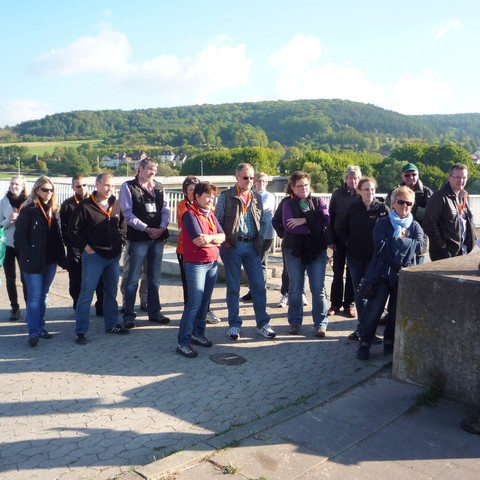The Leine flood retention reservoir (polder) is one of the EU’s largest bird sanctuaries.
The Leine polder in the Leine valley close to Einbeck’s village Salzderhelden, at approximately 3 kms from the city of Einbeck, is a flood retention reservoir. The Leine polder comprises an area of approximately 1000 hectares and may dam around 37 million m3 of water. The sealing structure at Salzderhelden retains the incoming water during floods and dams the water into polders. The Leine polder is actually divided into 5 individual polders that may be used according to need. Polder I is a nature conservation area. Polder V is a back-up and is only used in extreme situations.
The ground-breaking for the Leine polders with its dams was in 1972. The first trial damming was done 14 years later in 1986. The building measures were finalised in 1994 so that an initial complete damming could be done. Started in 1972 and finalised in 1994, it now offers in some areas renatured habitat for a lot of endangered birds as well as migrating birds.
The EU bird sanctuary Leine valley with the flood retention reservoir Salzderhelden between Northeim and Einbeck (Polders I-V) as well as the Northeim lake district has become an important resting and breeding area for thousands of different bird species over the last decades.
The Leine lowland between Northeim and Salzderhelden is with an extension of 1000 hectares the largest continuous area of marshes and wetlands in southern Lower Saxony. For breeding, resting and hibernating bird species it is of national and international importance. More than 300 species were counted up to now, 120 of them breeding birds. A lot of them are on the red list of endangered species. Therefore, the Leine valley was included as EU bird sanctuary in the European protection area network “Natura 2000” and is protected here through three nature conservation areas. You may find further information on this unique nature paradise here.
Information panels around the area offer information on flora, fauna and also on the function of the flood retention reservoir. The area may be viewed from five different observation spots and from the sections on the dams that are open to the public.
All-year-round hundreds of different types of geese and during migration a lot of cranesand other migratory birds may be observed. For example, over a hundred great white egrets are as winter guests in the area for some time. On the following page of the nature experience Leine polder visitors will find the best observation spots. Persons interested in guided tours of the Leine polder may find more information here and view dates.
TIP: There are seven spots in the polder that are equipped with audio stations to hear short, exciting audio plays with topics related to the polder, the resting bird species and the direct surroundings.
















